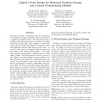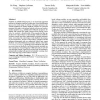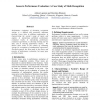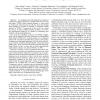78 search results - page 7 / 16 » Clock Synchronization: Open Problems in Theory and Practice |
VLSID
1999
IEEE
13 years 11 months ago
1999
IEEE
This paper provides a theoretical basis for eliminating or reducing the energy consumption due to transients in a synchronous digital circuit. The transient energy is minimized wh...
POPL
2009
ACM
14 years 8 months ago
2009
ACM
Deadlock in multithreaded programs is an increasingly important problem as ubiquitous multicore architectures force parallelization upon an ever wider range of software. This pape...
DAC
2003
ACM
14 years 8 months ago
2003
ACM
Multiple clock cycles are needed to cross the global interconnects for multi-gigahertz designs in nanometer technologies. For synchronous designs, this requires retiming and pipel...
ICDAR
2009
IEEE
13 years 5 months ago
2009
IEEE
Performance evaluation of document recognition systems is a difficult and practically important problem. Issues arise in defining requirements, in characterizing the system's...
FOCS
2009
IEEE
14 years 2 months ago
2009
IEEE
— In a landmark paper [32], Papadimitriou introduced a number of syntactic subclasses of TFNP based on proof styles that (unlike TFNP) admit complete problems. A recent series of...




